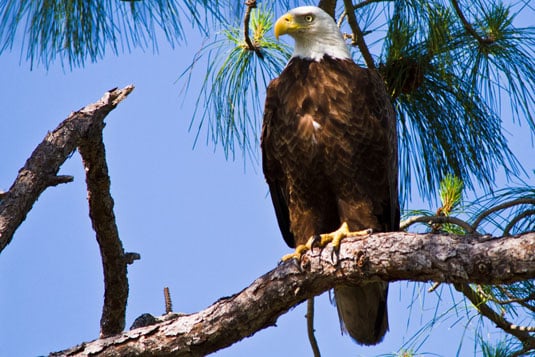You’ll be better prepared to photograph birds of prey if you know where to find them and know something about their lifestyles. You can find this information in books or through your local Audubon Society. You can also do an online search to find out about birds of prey in your area.
Birds of prey like hawks, eagles, and kestrels are sleek, fast-flying birds that feed on small animals, snakes, fish, and rodents. Birds of prey can be found in surprising places. Depending on where you live, you may find birds of prey in your neighborhood.

Here are some tips and settings to use when photographing birds of prey:
Listen for the bird’s distinct cry. You can find information about birds of prey and the sounds they make or hear recordings of the sounds they make at WhatBird. You can also purchase field guides for the Android, iPhone, iPod, or iPad.
Look for differences in the trees. Bald eagles have a distinct white crown that you can easily spot if you’re looking in the right direction. Instead of rushing helter-skelter, slow down, or stay in one spot and continually scan the area around you.
Use the longest telephoto lens you have. Birds of prey perch high in trees and fly high in the sky. You’ll need a lens with a focal length of at least 400mm to get decent shots of birds of prey.
Use Aperture Priority mode if you’re shooting stationary birds. Switch to an f-stop of f/8.0. Combined with a long telephoto lens, this gives you a very shallow depth of field to render the background as a soft out-of-focus blur.
Switch to a single auto-focus point. If possible, focus on the eye closest to the camera. If the eye closest to the camera is in not in focus, viewers assume the entire image is out of focus.
Switch to Continuous Auto-Focus mode. If the bird moves after you achieve focus, the camera automatically updates.
Switch to Continuous Drive mode. Doing so will enable you to capture a sequence of images when the bird moves or flies away.

